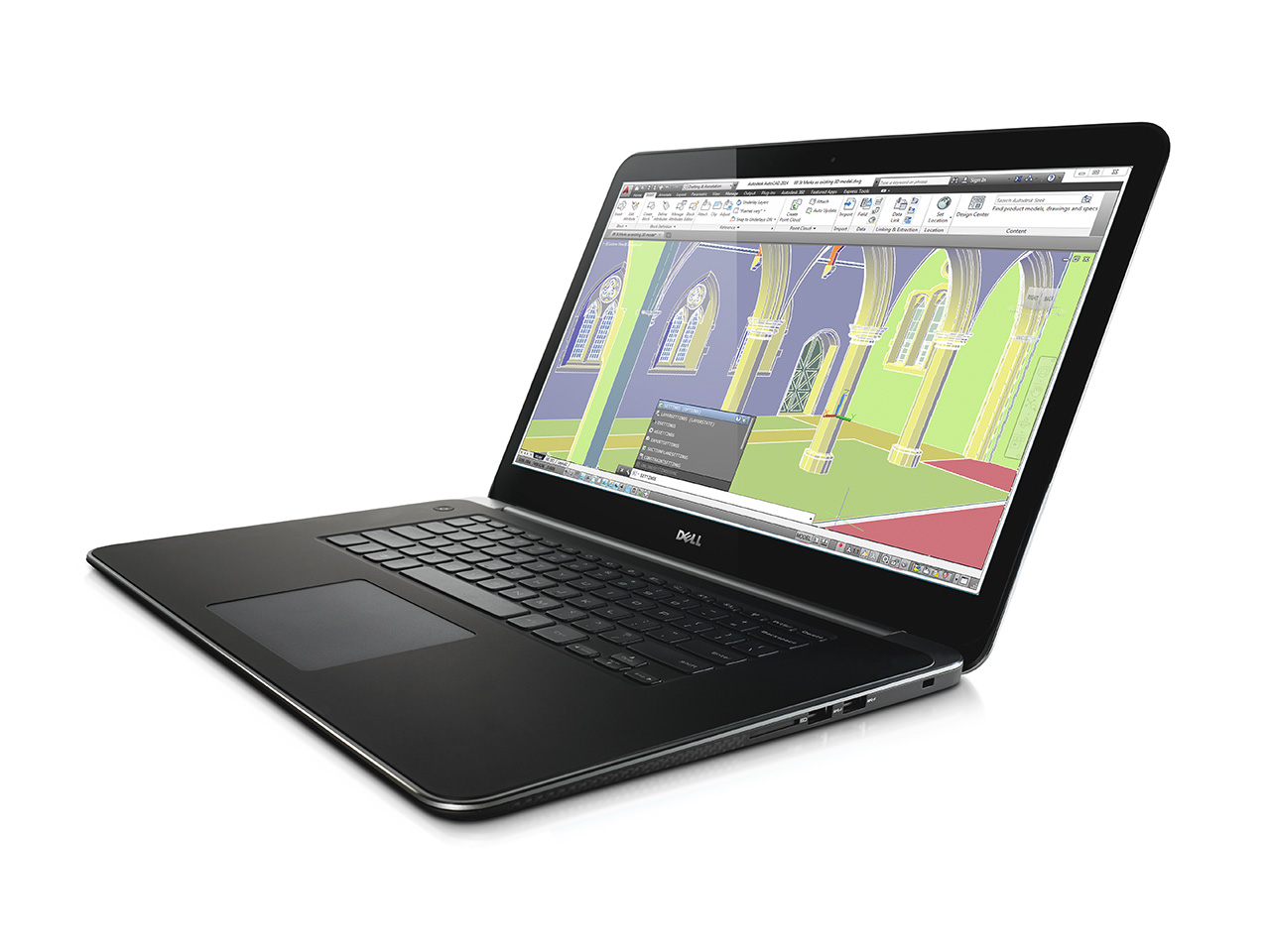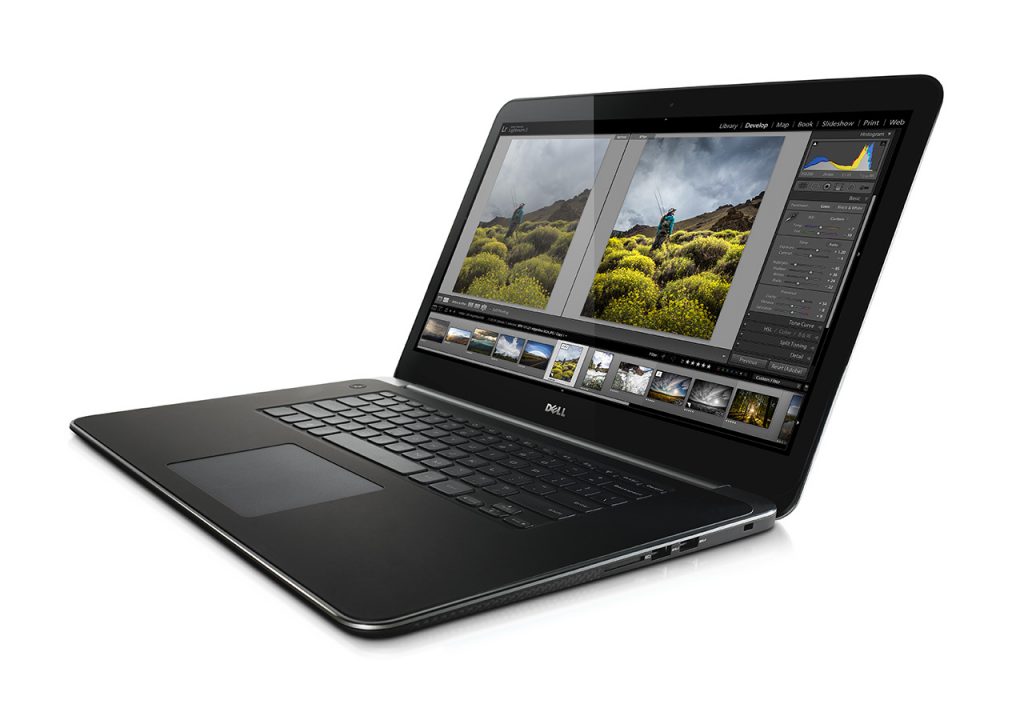
On the heels of the big announcement this week, I talked with Pat Kannar, Director of Product Marketing for Dell Precision, Mano Gialusis, Senior Product Manager for Dell Precision Mobile and Scott Hamilton, Vertical Market Strategist at Dell about what their news means for individuals and for the industry as a whole. Check out what they had to say…
PVC: Details surrounding the Dell Precision M3800 were made public this week. What makes this announcement so important?
Pat Kannar: I’ll put it bluntly…I think what this does is disrupt expectations for mobile workstations users in the market. In the past if you wanted a thin, light mobile design you had to sacrifice performance. If you wanted a high performance system, you often had to sacrifice mobility. We have right now the highest performance mobile workstations on the market with the Dell Precision M6800 and the M4800. That’s our 17 inch and our 15 inch platforms that we just launched about a month ago. They’re great products. If you think about them they’re desktop replacements that you can shove in a backpack and carry anywhere you want in the world. Even with that kind of mobility there’s been a desire for something thinner and lighter and given other trends in the industry toward extreme thinness and lightness we wanted to bring a product out there that would shake things up. And we wanted to do it in a way that would reshape the perception about the Precision brand in the workstation market.
We also wanted to remind people that we really are the innovation leaders in the workstation market. In 2001 we were the first to bring a mobile workstation to market. In 2005 we were the first to bring a dual-socketed workstation to market. And we were the first to bring a rack workstation to market. Over the last couple years we’ve had the most powerful mobile systems and we’ve experimented with technologies like touch. A lot of people don’t even realize it but we’ve had touch in our platforms for three years now.
With this platform we think we’re really going to bring a lot of attention to the Precision brand with the thinnest and lightest 15-inch mobile workstation available.
How do you see it impacting individuals and organizations?
Pat Kannar: For the individual, this gives them something they haven’t had. You’ve got an Intel Quad Core CPU and NVIDIA Quadro professional GPU. Neither of these are entry level options in their categories. This is a mainstream level solution and we didn’t sacrifice either the thinness or lightness or some of the other things that you expect in a workstation. We have the dependability, and dependability to us is a combination of things. It has 50 engineering, design and digital content creation applications across 30 different ISV’s that will be certified and optimized for it. It is available with optional Dell ProSupport for premium 24/7 global support from expert technicians as well as optional same business day service.
For organizations, what is does is allow us to grow the overall market. I don’t think this replaces a lot of your traditional 15 inch workstations. I think it becomes a more attractive solution to potentially lower performing commercial systems or lower performing consumer systems and it also reaches a portion of the market who couldn’t make the jump to a workstation because it didn’t have the mobility they were looking for. Organizations can use this in a lot of different ways because it will allow them to utilize the right tool for the kind of work they really need to do. They won't need to make a choice between functionality or mobility as they would have in the past.
Mano Gialusis: I did some customer visits a few weeks back and a lot of the customers were saying things like “I don’t want to add another laptop that I need to manage or keep track of.” So once they saw the Dell Precision M3800 and I talked to them about its’ capabilities they were excited because these customers were having to put non-business class notebooks in the hands of their salespeople because they need that portability. It really completes the story for some of those customers.
And let’s not forget that it is a sexy looking box. There is a certain group of people who need a box that reflects their creativity while also reflecting a degree of professionalism. In the past it was difficult to get that image and that credibility at the same time.
The capabilities of the product are also something to focus on, since it supports multiple displays. Because it’s designed for creative professionals we’ve ensured that the new 4K displays, including the Dell UltraSharp 32, that are coming out can be supported by this. You can use a 4K display or multiple high res displays. When you see something like this you naturally have questions around whether it can actually do what it says it can do but everyone who’s taken a look is pleasantly surprised to see it meets the promise. It’s a fantastic machine for creation by individuals that can also be utilized within an organization.
Speaking of creating, did feedback from the professional community play a large part in the development process?
Pat Kannar: We decided that an area where we wanted to put additional emphasis on in terms of the kind of customers we were reaching out to was within the professional community, or what we call the creative community. That’s in media and entertainment as well as the designers and engineering community. People who are using all of the media applications for video editing as well as CAD/CAM apps and things like that. We were trying to reach out to that set of customers and we’ve done a lot of work over the last two years to understand what their specific needs were. We were looking to understand what they were willing to trade-off to get a more mobile system. And we incorporated that feedback.
For example, we don’t have an optical drive in this system. We knew from the conversations that we’ve had over the last couple years that for creative professionals, an optical drive is becoming less and less important. In other parts of the market the optical drive is still a necessity, but for these users, they wanted something that was much thinner and lighter. They needed the look and feel that we’ve provided with the ID. It had to be very professional but still sexy. It’s not as conservative of an ID. They still weren’t willing to sacrifice the professional graphics and the quad-core processor, which is why those things are an important elements of the product.
Scott Hamilton: One thing that I think stands out especially in the media and entertainment space is that people are very concerned with what they carry with them and how it looks. They have a certain image they want to portray and that’s why many will carry a Macbook Pro even if it isn’t the right tool for them. We really think this platform gives them the best of both worlds since it will provide them the ability to run the professional applications they use all the time, some of which only run on Windows. And of course apps like Adobe After Effects and Adobe Premiere Pro will be certified on the M3800.
This is a mobile platform that’s stylish and fits into the creative professional's lifestyle in a critical way. Plus it has all the other benefits that come along with the workstation like certification and professional level support that a professional user really needs.
Mano Gialusis: From a product manager perspective, my big thing is getting in the features I want and showing it to customers as early as possible. I love that we’re able to gather customer feedback early on and implement as much as we can.
The features that we were able to get into the Dell Precision M3800 are amazing. I haven’t heard much around things we might have missed. If we don’t have something they were looking for, our customers understand why and know they can get it in the Dell Precision M4800. It’s really a great box and I’ve enjoyed working on it.
Mano Gialusis: I definitely think so. Traditionally people have thought of workstations as the big boxes that sit underneath your desk with tons of performance, scalability and expandability that can handle any sort of hardware upgrade. Recently that’s shifted a little bit as mobile workstations have come along that are seen as desktop replacements. Unfortunately, some of those systems might not be as mobile as the term implies in some instances. So we’re definitely redefining what a mobile workstation is to everyone.
People are starting to see that the performance is getting them where they need it to be. It’s something they’ve been wanting but no one has built. Dell is now building the product they’ve been looking for.
Honestly, it’s not something that you can talk to a couple customer over and knock it out in the couple months. There’s a long development cycle. I’ve been working on this for a year so it takes a little while to take all the feedback and develop something like this. The turnaround time isn’t as quick as you might imagine but when we talk to people they tell us what they want and that’s what we develop. But I think the M3800 is going to redefine what a workstation is. I know there are other products that make similar claims, but when you really sit down and compare the M3800 to others you’ll see there is no comparison.
Pat Kannar: When we did the Limelight event at SIGGRAPH this year we were showing the M3800 off and it was great because one of our ISV partners came up us after trying it out and said, “Well, I don’t need to carry an Apple around anymore.” So we were excited by that. It tells you the kind of customer we’re talking about but also that people understand it.
What do you think will surprise people the most about the product?
Pat Kannar: They certainly should be surprised by the kind of performance and reliability and true workstation character they they’re getting in a box that’s far sexier than they’ve ever seen from a workstation provider in the past. But when I really look at it, I think they’re going to be surprised by how these applications integrate with everything from Windows 8.1 to the touch capabilities. Those kind of capabilities are really going to be the things that shock some people.
Scott Hamilton: About a week ago I loaded Maya on my M3800. I’m a longtime Maya user and I was expecting that it would run but I was pleasantly surprised at how responsive it was. The accuracy of the touch was great and the performance went above and beyond what I imagined.
Mano Gialusis: Some of the comments I’ve heard from people centered around them being surprised at what they could run. They didn’t think they’d be able to run as many apps or as high-performance apps as they were able to. “Surprise” was definitely a big word in a lot of people’s mouths. They certainly weren’t expecting to see the kind of power the box showed off.
Where can people go to learn more?
Pat Kannar: The Dell Precision M3800 will be available worldwide on November 14 on with a starting price of $1799 USD. For additional information visit www.dell.com/speedoflight

